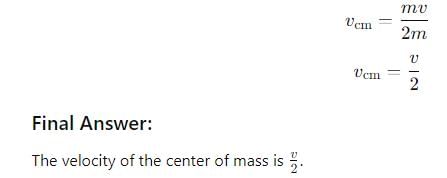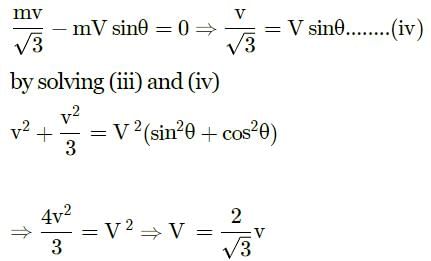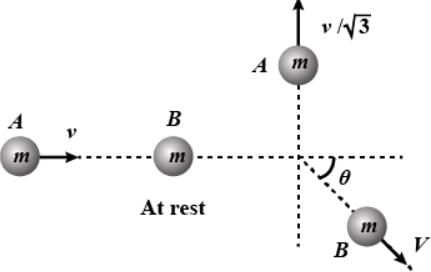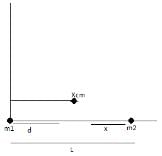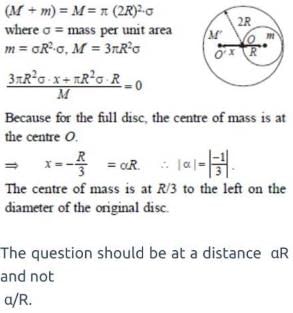NEET Previous Year Questions: Centre of Mass - NEET MCQ
12 Questions MCQ Test - NEET Previous Year Questions: Centre of Mass
Two identical particles move towards each other with velocity 2v and vrespectively. The velocity of centre of mass is [AIEEE 2002]
Consider the following two statements :
A. Linear momentum of a system of particles is zero.
B. kinetic energy of a system of particles is zero.Then
[AIEEE 2003]
A body A of mass M while falling vertically downwards under gravity breaks into two parts; a body B of mass  M and, a body C of mass M. The centre of mass of bodies B and C taken together shifts compared to that of body A towards
M and, a body C of mass M. The centre of mass of bodies B and C taken together shifts compared to that of body A towards
[AIEEE 2005]
A mass m moves with a velocity v and collides inelastically with another identical mass. After collision the 1st mass moves with velocity in a direction perpendicular to the initial direction of motion. Find the speed of the second mass after collision.
in a direction perpendicular to the initial direction of motion. Find the speed of the second mass after collision.
[AIEEE 2005]
Consider a two particle system with particles having masses m1 and m2. If the first particle is pushed towards the centre of mass through a distance d, by what distance should the second particle be moved, so as to keep the centre of mass at the same position?
[AIEEE 2006]
A bomb of mass 16 kg at rest explodes into two pieces of masses 4 kg and 12 kg. The velocity of the 12 kg mass is 4 ms-1. The kinetic energy of the other mass is
[AIEEE 2006]
A player caught a cricket ball of mass 150 g moving at a rate of 20 m/s. If the catching process is completed in 0.1 s, the force of the blow exerted by the ball on the hand of the player is equal to
[AIEEE 2006]
A circular disc of radius R is removed from a bigger circular disc of radius 2 R, such that the circumference of the discs coincide. The centre of mass of the new disc is from the centre of the bigger disc. The value of a is
[AIEEE 2007]
A thin rod of length L is lying along the x-axis with its ends at x = 0 and x = L. Its linear density (mass/length) varies with x as where n can be zero or any positive number. If the position
of the centre of mass of the rod is plotted against n, which of the following graphs best approximates the dependence of
on n?
[AIEEE 2008]
A block of mass 0.50 kg is moving with a speed of 2.00 ms-1 on a smooth surface. It strikes another mass of 1.00 kg and then they move together as a single body. The energy loss during the collision is
[AIEEE 2008]
Statement I : Two particles moving in the same direction do not lose all their energy in a completely inelastic collision.
Statement II : Principle of conservation of momentum holds true for all kinds of collisions.
[AIEEE 2010]
Statement-I : A point particle of mass m moving with speed u collides with stationary point particle of mass M. If the maximum energy loss possible is given as then f =
.
Statement-II : Maximum energy loss occurs when the particles get stuck together as a result of the collision. [JEE MAIN 2013]



